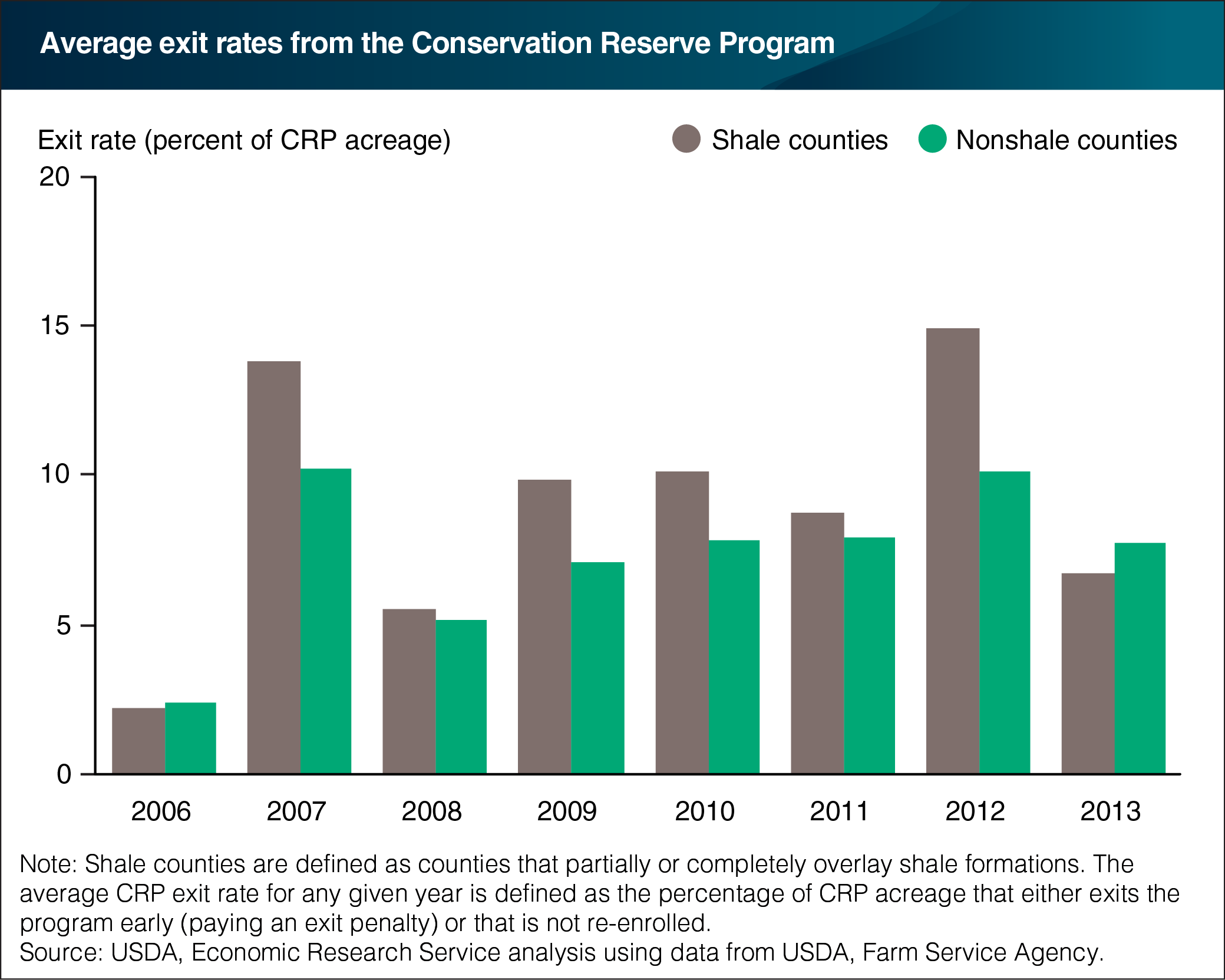Land in shale areas more likely to leave Conservation Reserve Program
- by Claudia Hitaj
- 9/1/2016

Hydraulic fracturing for natural gas and oil trapped in shale formations has diverse impacts on agriculture. Farmers in shale regions have the potential to receive lease or royalty payments, but may face competition with energy companies for labor, water, and transportation infrastructure, and may also have an increased risk of soil or water contamination. In addition, shale energy development may affect farmers’ participation in certain USDA programs, such as the Conservation Reserve Program (CRP). CRP covered about 27 million acres of environmentally sensitive land at the end of 2013, with enrollees receiving annual rental and other incentive payments for taking eligible land out of production for 10 years or more. About 28 percent of CRP land is located in counties that overlay shale formations (“shale counties”). From 2007 to 2012, the CRP exit rate (including early exits and non-reenrollments) was greater, on average, in shale counties than in non-shale counties. Early exits and decisions not to re-enroll could be due to a number of factors, including the placement of oil or natural gas wells, pipelines, and access roads through CRP land. For acres that exit the CRP, landowners must pay an early-exit penalty, which is the sum of all CRP payments received since enrollment plus interest. This chart is found in the ERS report, Trends in U.S. Agriculture’s Consumption and Production of Energy: Renewable Power, Shale Energy, and Cellulosic Biomass, released on August 11, 2016.

